Xavier Costa Perez
Graph Neural Network-enabled Terahertz-based Flow-guided Nanoscale Localization
Jul 09, 2023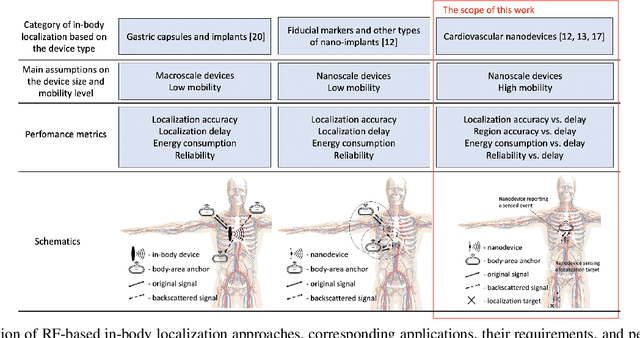
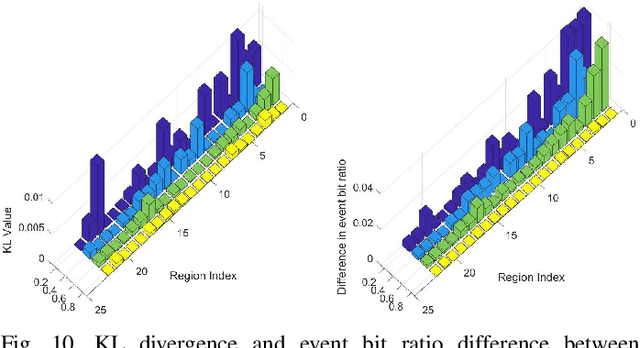
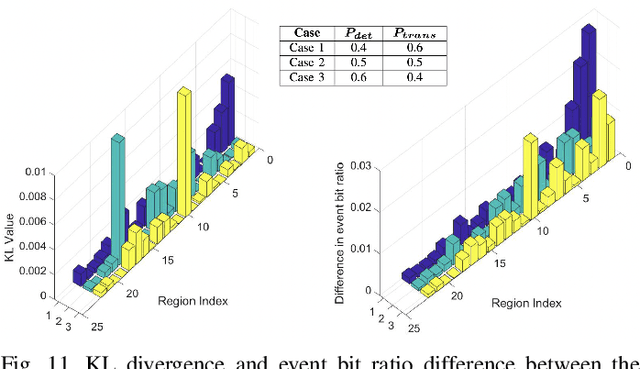
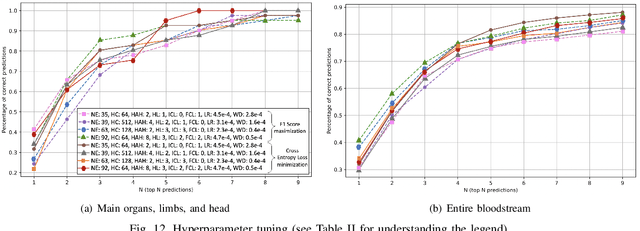
Abstract:Scientific advancements in nanotechnology and advanced materials are paving the way toward nanoscale devices for in-body precision medicine; comprising integrated sensing, computing, communication, data and energy storage capabilities. In the human cardiovascular system, such devices are envisioned to be passively flowing and continuously sensing for detecting events of diagnostic interest. The diagnostic value of detecting such events can be enhanced by assigning to them their physical locations (e.g., body region), which is the main proposition of flow-guided localization. Current flow-guided localization approaches suffer from low localization accuracy and they are by-design unable to localize events within the entire cardiovascular system. Toward addressing this issue, we propose the utilization of Graph Neural Networks (GNNs) for this purpose, and demonstrate localization accuracy and coverage enhancements of our proposal over the existing State of the Art (SotA) approaches. Based on our evaluation, we provide several design guidelines for GNN-enabled flow-guided localization.
Insights from the Design Space Exploration of Flow-Guided Nanoscale Localization
May 29, 2023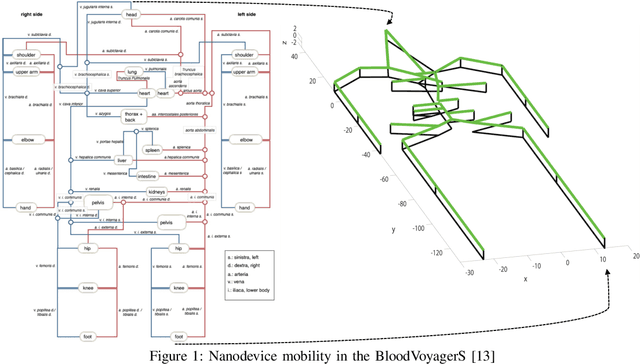
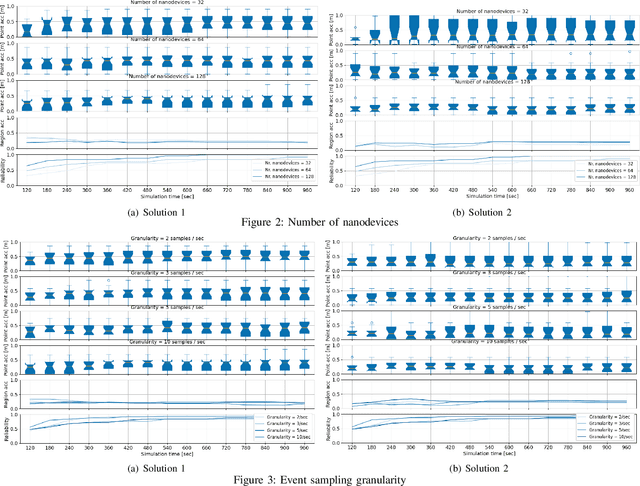
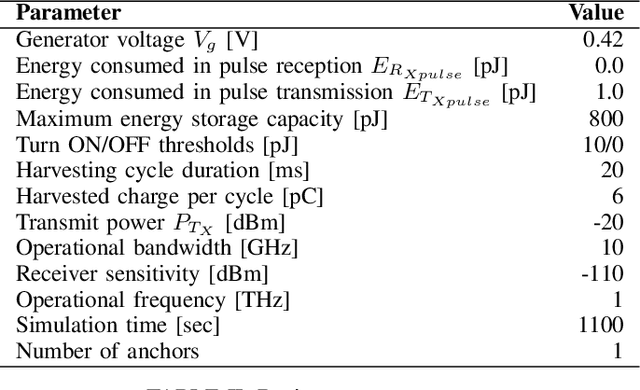

Abstract:Nanodevices with Terahertz (THz)-based wireless communication capabilities are providing a primer for flow-guided localization within the human bloodstreams. Such localization is allowing for assigning the locations of sensed events with the events themselves, providing benefits in precision medicine along the lines of early and precise diagnostics, and reduced costs and invasiveness. Flow-guided localization is still in a rudimentary phase, with only a handful of works targeting the problem. Nonetheless, the performance assessments of the proposed solutions are already carried out in a non-standardized way, usually along a single performance metric, and ignoring various aspects that are relevant at such a scale (e.g., nanodevices' limited energy) and for such a challenging environment (e.g., extreme attenuation of in-body THz propagation). As such, these assessments feature low levels of realism and cannot be compared in an objective way. Toward addressing this issue, we account for the environmental and scale-related peculiarities of the scenario and assess the performance of two state-of-the-art flow-guided localization approaches along a set of heterogeneous performance metrics such as the accuracy and reliability of localization.
Predictive Context-Awareness for Full-Immersive Multiuser Virtual Reality with Redirected Walking
Apr 06, 2023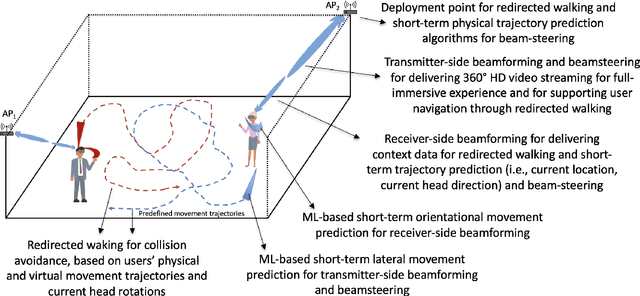

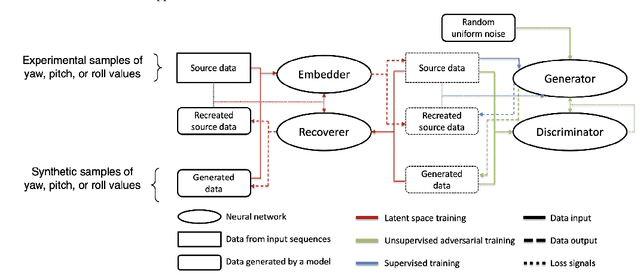
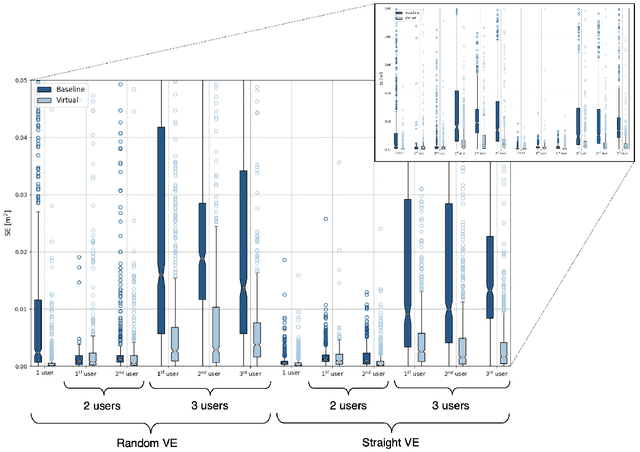
Abstract:The advancement of Virtual Reality (VR) technology is focused on improving its immersiveness, supporting multiuser Virtual Experiences (VEs), and enabling the users to move freely within their VEs while still being confined within specialized VR setups through Redirected Walking (RDW). To meet their extreme data-rate and latency requirements, future VR systems will require supporting wireless networking infrastructures operating in millimeter Wave (mmWave) frequencies that leverage highly directional communication in both transmission and reception through beamforming and beamsteering. We propose the use of predictive context-awareness to optimize transmitter and receiver-side beamforming and beamsteering. By predicting users' short-term lateral movements in multiuser VR setups with Redirected Walking (RDW), transmitter-side beamforming and beamsteering can be optimized through Line-of-Sight (LoS) "tracking" in the users' directions. At the same time, predictions of short-term orientational movements can be utilized for receiver-side beamforming for coverage flexibility enhancements. We target two open problems in predicting these two context information instances: i) predicting lateral movements in multiuser VR settings with RDW, and ii) generating synthetic head rotation datasets for training orientational movements predictors. Our experimental results demonstrate that Long Short-Term Memory (LSTM) networks feature promising accuracy in predicting lateral movements, and context-awareness stemming from VEs further enhances this accuracy. Additionally, we show that a TimeGAN-based approach for orientational data generation can create synthetic samples that closely match experimentally obtained ones.
 Add to Chrome
Add to Chrome Add to Firefox
Add to Firefox Add to Edge
Add to Edge